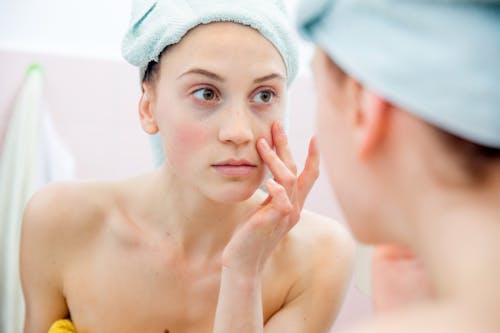On 17
Aug
2022

One of the most popular cosmetic procedures patients are requesting now more than ever is filler under the eyes. Read on to learn more about how this nonsurgical treatment might benefit you.
What is under-eye filler?
Tear trough filler, also known as "undereye" filler, is an injectable procedure that corrects undereye hollowing, camouflages undereye bags, fills in lines and wrinkles, minimizes dark circles, and replenishes volume under the eyes and in the mid-face (cheeks) which is lost as we age.
What type of filler is used for under-eye correction?
Many types of fillers are available, and in general, any hyaluronic acid (HA) filler is safe to use under the eyes. Hyaluronic acid fillers are made of a gel-like substance that naturally is produced and broken down by your body. The gel is placed underneath the skin and also draws in water to help hydrate the skin. Many different HA filler brands exist, and each has different properties. The most important factor for a successful undereye filler treatment is the meticulous and accurate placement of filler under the eyes by an experienced master injector who specializes in facial anatomy. It is very important that a licensed and skilled medical provider such as a PA, MD, DO, or NP assess you in consultation to determine if you are a candidate and which filler is best for you.
From the Juvéderm® family of fillers, my personal favorite for undereye filler is Vollure®, which is similar in consistency to honey and works well under the eyes where the skin tends to be thinner. Juvederm® Vollure® is a great choice for patients who have mild to moderate deformity of the “tear trough,” an anatomical landmark where the skin under the eye meets the cheek. From the Restylane® family of fillers, my favorite filler to treat the undereye area is known as Lyft. This filler works really well for patients who have moderate to severe hollowing under their eyes.
Who is a good candidate for under-eye filler?
Patients with sunken eyes or undereye hollows are the ideal patients for undereye filler. There are many factors that contribute to the formation of true visible tear trough deformity. It is important to discuss with patients the cause of their undereye concern and determine the best approach to address it.

What causes under-eye bags & hollows?
Undereye hollowing can be genetic, which means regardless of your age if you feel your under eyes need a refresh, you can have a professional master injector evaluate you to find out if filler can help.
Undereye concerns can worsen or evolve as we age. The ligaments and muscles around the eye weaken and the fat pads within the orbit can herniate or "pop" out, similar to a hernia in your belly. Some patients have festoons (also known as malar mounds) that cause additional "bags" under the eyes. In this case, lower eyelid surgery with laser skin resurfacing might be a better option for you.
Environmental factors such as allergies, dehydration, and lack of sleep can all contribute to an unfavorable undereye appearance. In these instances, antihistamines can help with allergies, increasing water intake will help to hydrate your skin and under your eyes, and good sleep hygiene can help you look more rested.
How much does under-eye filler cost?
Any hyaluronic acid filler can cost between $650-900 per syringe. Cost varies based on filler type and provider experience.
How many syringes of filler do I need for under-eye treatment?
Many times, loss of volume in the cheek can worsen undereye hollowing. Therefore, we have to evaluate if the cheek is contributing to your undereye concern. In general, it takes about one to two syringes of filler per eye to address undereye hollowing properly. Patients often start with one syringe per side, and we can certainly continue to add filler during multiple sessions if needed to achieve the desired results. There is no limit on how many syringes can be used, but it is important to avoid overfilling the undereye area, as this can look unnatural and cause problems, such as lymphatic congestion, festoons, or Tyndall effect – which can make a patient’s skin appear blue-green. Equally as important, a provider should avoid under-treating the area so that the desired result can be fully achieved.
How long does under-eye filler last?
On average, dermal fillers can last from nine to 18 months. How long a filler lasts depends on which filler is used, and how quickly your body metabolizes the filler.
How can I address dark circles or darkened skin color along my under-eye?
Undereye filler treatments performed with hyaluronic acid fillers can be combined with Exosomes or other natural healing gels to lighten the skin under the eyes. Exosomes promote healing and enhance cell-to-cell communication, by telling the cells in your body to repair themselves faster.
At our office, we also create gels that harness the power of your own body’s own healing properties to repair damaged tissues, restore undereye skin, and address dark circles. This treatment involves taking a small blood sample and placing it in a centrifuge machine. The device separates the healing substance from the blood, then the pure gel is placed directly into the area being treated, such as under the eyes.
We also recommend eye brightening serums that contain hydroquinone, kojic acid, and Treitinoin. My favorite undereye cream is Rejuven-Eyes from our Clevens Signature Skin Care Collection!
Undereye filler can help you feel more confident, rested, and youthful! To learn more, schedule your consultation with one of our master injectors so you can find out if this trending treatment can benefit you.

